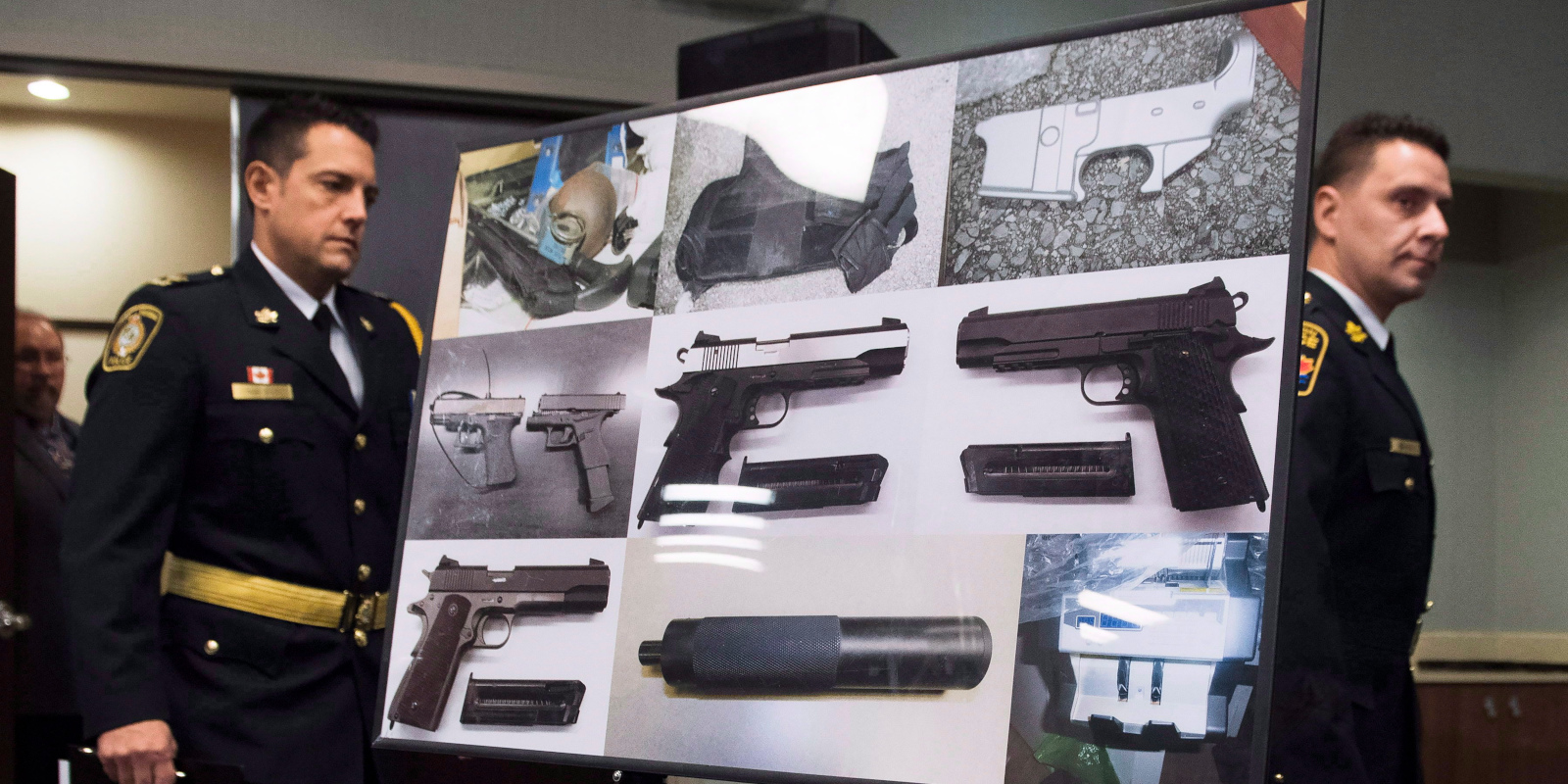This is part two of The Hub’s latest three-part series on gun control policies in Canada. Be sure to check out part one and part two.
In April, a joint operation between Canadian and American law enforcement agencies arrested 42 people and seized 173 firearms as part of an ongoing effort to crack down on cross-border gun smuggling.
Canada shares the world’s longest undefended border with a country that has more firearms than people, making the United States both the obvious source of illegal firearms and one that is nearly impossible to control. It’s easy to point to the United Kingdom or New Zealand and note that they have almost eliminated gun violence, but the bleak truth is that it is difficult to eradicate a phenomenon when you are intrinsically linked to its source. Nevertheless, there are improvements we can make to better combat smuggling.
“Ontario is the only province that has a comprehensive firearm tracing program,” says the University of the Fraser Valley’s Dr. Noah Schwartz. “Doing more tracing can help uncover these smuggling networks. It’s only very recently that the government has woken up to the need for better data.”
Dr. Schwartz argues that having more data, and more integrated law enforcement operations acting on that data, can help stem the flow of illegal firearms. Also in need of more funding are programs that flag the potential misuse of firearms.
“If someone has a concern about a person who has guns, they can call the police, and the police have the authority to seize that person’s gun and follow up on the complaint. The tragic thing is we probably could have stopped the Nova Scotia shooting if the police had the resources to follow up on complaints that this individual had illegal firearms. There were tons of legal tools at their disposal. It just didn’t happen. But these are problems with enforcement, not control.”
There are common sense improvements to be made to Canada’s licensing system. To accomplish them, however, the government will need to view legal gun owners as allies, not cheap political targets, says Daniel Fritter, the editor of Calibre Magazine, who suggests some straightforward changes.
“I think we should invest more in licensing and enforcement,” Fritter says. “We have a ton of guns unaccounted for. I’d prefer to see the Firearms Program prioritise pulling more illegal guns into legal compliance. If a rural guy could access the testing material to obtain a Possession and Acquisition Licence online, he may be more likely to obtain a licence when he inherits some guns no one knows about, which then makes those guns a lot less likely to ever be sold on the black market. Or if two guys can verify each other’s PAL status online, it leads to more people checking PALs when they sell a gun, thus fewer fraudulent purchases. These are very commonly confronted use cases where the Firearms Program isn’t just well situated to interdict or prevent crime; they’re the best-positioned entity we have.”
However, as long as there is a demand for guns, the black market will meet that demand.
“There’s a lot law enforcement can do, but there are real limitations to plugging a hole that big. We need to focus on the reasons there is that demand for firearms, rather than focusing all of our efforts on the supply.”
Canada’s rise in gun violence is tied to gang violence, which has increased since 2013.
“The majority of gun violence, the part of the iceberg under the water, tends to be concentrated in large cities and marginalised communities, for example Indigenous communities,” Dr. Schwartz says. “And it stems from a lot of social issues we haven’t dealt with because they’re really difficult to deal with. It would take a huge amount of investment to actually get at these root causes. It’s easier to put forward flashy policies like gun bans.”
Once someone joins a gang, it can be difficult to reverse course.
“We have to reach out to young people from marginalised communities and try to divert them from gangs before they get so far in that it’s hard to get out,” Dr. Schwartz says. “There are really good programs that do this, but they don’t have much funding. And then once you have a criminal record, there’s a whole new layer of difficulties in trying to get a normal job and integrating into society.”

The federal government recently pledged $250 million to the Building Safer Communities Fund, meant to “address the underlying conditions that give rise to crime,” but there are still obvious gaps in the social safety net. An Indigenous Canadian is six times more likely to be the victim of homicide and 10 times more likely to be shot by the police; not coincidentally, the Assembly of First Nations argues that federal funding to bring Indigenous homes, schools, and infrastructure up to national standards is falling short by tens of billions of dollars. A government report claims that 80 percent of Canadian firearm deaths are suicides; not coincidentally, a Canadian Mental Health Association survey found that a third of Canadians with mental health concerns failed to find help due to a lack of money or resources, even as a 2021 election pledge to put $4.5 billion towards provincial mental health programs has failed to materialise.
Blaming gun violence on social woes can sound like an easy dodge and, in the United States, it is often exactly that. But that returns us to the trap of viewing Canadian gun control through America’s blood-soaked lens. Our grim irony is that increased funding for police programs will likely be unpopular to Left-leaning voters, while an expansion of social programs will be a tough sell to conservatives forever looking to cut taxes. But a failure to stop gun violence has its own costs, and Canada is spinning its wheels with control methods that have reached their limits.
“I think anyone who says guns don’t kill people is being dishonest,” Dr. Schwartz says. “Firearms are dangerous. They should be regulated like we regulate other dangerous objects. There are reasonable policies that balance the utility of firearms as objects for sport and hunting with the danger they pose. And I think Canada’s system of licensing does a really good job of that because it focuses on assessing whether someone is a danger. At the same time, the idea that if we just got rid of legal guns the problem would go away is a complete fiction. So there are limits to the extent we can use firearms policy as a tool to reduce homicide in Canada. It’s an important tool, and I think we use it effectively. But we’re getting to a major point in diminishing returns.”
Recommended for You

‘We are not the United States. No one needs to own Canadian bonds’: Rudyard Griffiths and Sean Speer on Canada’s looming debt crisis

DeepDive: Bridging the imagination gap: Why Canadian businesses must rethink AI adoption now

‘Not a guide to practical action’: David Frum on 60 years of George Grant’s Lament for a Nation

Ginny Roth and Brian Dijkema: Why Ontario should allow independent schools and unlock true choice in education



